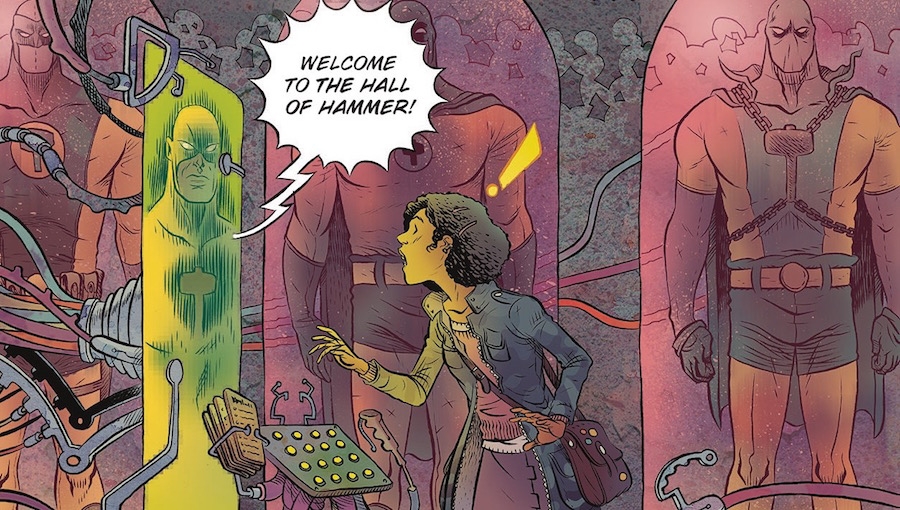Now we can call Black Hammer the Eisner Award winner for Best New Series in 2017 – a worthy and much deserved honor. For a series that started a year ago with a first issue that I wasn’t quite certain about, I fell in love a few issues in when its initial premise almost immediately came to fruition as if a year had already passed. It dug deeper as a story and into its characters in a more meaningful way than most books do in a couple of years. It is a character study of multiple superheroes simultaneously, a genre study of the superhero genre, and a human study of the people under the masks.
For our heroes, who are trapped on a mysterious farm for ten years, their heroic facades have begun to crumble and the humans underneath reshape and reform into something unlike what they were. It could be a story of people who wither away when trapped in a job they don’t like, or in a relationship they feel trapped in, unable to be who they are and do what they are best at. In issue #12, we begin following a path that juxtaposes those stories, and it may just end up saving their lives. There is a glimpse of hope, and that hope is Lucy Weber, daughter of Black Hammer.
Introduced a handful of issues ago as a journalist trying to find the disappeared heroes, Lucy found her way to the farm but had her memory erased as to how she arrived. Unlike the collection of heroes who are quickly unraveling, Lucy steps up to perhaps be the true hero of the book. Issue #12 is her story from the beginning (i.e., her father’s ending, and everything that made her who she is). It’s an emotional journey that (especially with the right music playing) hits deep to the core, even more so if you’ve been following along from the series’ inception.
Aside from a few glimpses of the hero, Black Hammer, this is the closest we’ve gotten to know him, through his daughter – the person he affected most. In a comic book that strips the layers back of what it means to be a hero aging listlessly, what it means to be a human aging listlessly, and what it means to be both at the same time, it’s an interesting story to see how those close to them are affected by their loss and what those heroics can mean to the ones that love them.
David Rubin’s art continues to be perfect. The nuances of the colors he uses help the emotional story flourish, and since he is also doing the lettering, each panel is a pop artist’s dream. One particular panel has someone walking out of the room and slamming the door. We don’t see the door slam, but the image that is presented from one side of the panel to the other tells the story vividly.
If you haven’t been reading this book, don’t listen to me. Listen to the Eisner Awards, and go and find the first volume.

